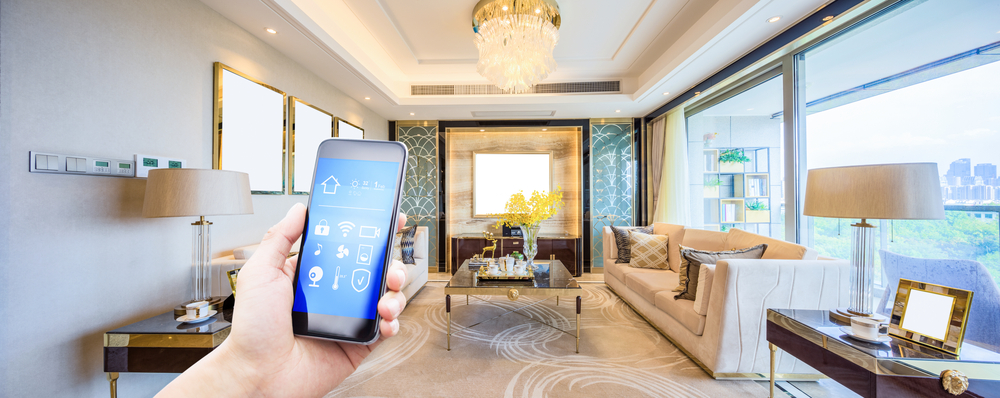Automation is no longer a luxury reserved for high-tech enthusiasts or big budgets. Thanks to evolving technology, automating your home is more accessible and affordable than ever. From enhancing convenience to improving energy efficiency, the benefits are vast. But where do you start, especially if you’re watching your spending? This guide explores practical, cost-effective strategies to bring the smart home experience to your doorstep without breaking the bank.
Start Small: Focus on Key Areas First
One of the most budget-friendly ways to automate your home is to start small. Instead of diving into a full-scale overhaul, prioritize the areas that would provide the most value.
Lighting is an excellent starting point. Smart bulbs, such as those from Philips Hue or Wyze, allow you to control brightness, color, and even schedules via your smartphone. Many options integrate with voice assistants like Alexa or Google Assistant, offering hands-free convenience.
Smart plugs are another affordable entry point. These devices let you automate appliances like coffee makers or lamps, making it easy to control them remotely or set schedules.
Leverage Ecosystem Deals and Starter Kits
Many companies offer bundled starter kits that include several automation devices at a discounted rate. Look for brands that provide versatile ecosystems—this ensures compatibility between devices, which can save you money and frustration down the line.
For instance, systems like Amazon Echo, Google Nest, and Samsung SmartThings are known for their compatibility with various third-party devices. Starter kits often include a mix of smart hubs, plugs, or sensors, making them a cost-efficient way to establish your home’s automation foundation.
Use Conditional Automations to Save Energy
Energy efficiency is one of the primary motivators for automating a home, and it’s also a great way to offset your initial investment. Smart thermostats, such as Ecobee or Google Nest, allow for precise temperature control. While the upfront cost may seem steep, these devices can help reduce energy consumption over time by learning your preferences and adjusting accordingly.
Additionally, motion sensors can be paired with lighting to ensure lights only stay on when a room is occupied. Similarly, smart power strips can cut power to devices in standby mode, helping to lower electricity bills.
DIY Automation Solutions
For the technically inclined, creating DIY automation solutions can significantly reduce costs. Platforms like Raspberry Pi and Arduino allow you to build custom smart home solutions tailored to your specific needs. While this approach requires a bit of learning and hands-on effort, it can be highly rewarding and budget-friendly.
Online forums and tutorials offer step-by-step guidance for building everything from automated blinds to customized security cameras. By sourcing affordable components and taking a DIY approach, you can achieve robust automation on a shoestring budget.
Utilize Free or Low-Cost Apps for Centralized Control
A common misconception is that home automation requires expensive hubs or controllers. In reality, many devices can be managed directly through free or low-cost smartphone apps. Apps like Google Home, Alexa, and SmartThings provide a centralized interface to manage multiple devices without needing a dedicated hub.
Some apps even offer features like geofencing, which allows your home to respond automatically based on your location—for example, turning off lights when you leave or adjusting the thermostat when you’re on your way home.
Keep Security in Mind
While affordability is important, security should never be overlooked when automating your home. Smart locks and cameras are increasingly affordable, and they add a valuable layer of protection. Options like Wyze Cam or Eufy offer high-quality video monitoring at competitive prices.
To further enhance security, ensure all devices are regularly updated to the latest firmware. Using strong, unique passwords and enabling two-factor authentication can also help protect your smart home system from potential vulnerabilities.
Shop Smart: Timing and Discounts Matter
To stretch your automation budget further, timing your purchases strategically can make a big difference. Sales events like Black Friday, Cyber Monday, and Prime Day often feature substantial discounts on smart home devices.
Clearance sales and refurbished options are also worth exploring, as they can provide excellent value without compromising functionality. Price comparison tools and browser extensions, such as Honey or CamelCamelCamel, can help track discounts and ensure you’re getting the best deal.
The Long-Term Perspective: Upgrading Gradually
Instead of viewing home automation as a one-time expense, think of it as an ongoing project. Upgrading gradually allows you to spread out costs and experiment with different devices to find what works best for you.
For example, you might start with smart lighting in a single room and expand to include automated window shades or a smart doorbell over time. By building incrementally, you can create a customized smart home experience that aligns with your budget and priorities.
Achieve Automation Without Overspending
Creating a smart home doesn’t have to drain your savings. By starting small, leveraging deals, and embracing DIY solutions, you can enjoy the convenience and efficiency of automation without overspending.
Remember, the key is to prioritize your needs, explore compatible ecosystems, and take a gradual approach. Whether you’re looking to simplify daily tasks or enhance energy efficiency, these strategies can help you automate your home in a cost-effective and thoughtful way.
